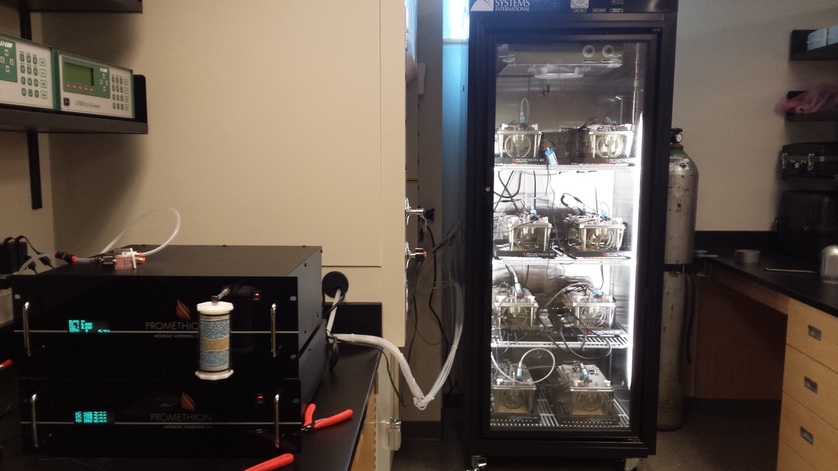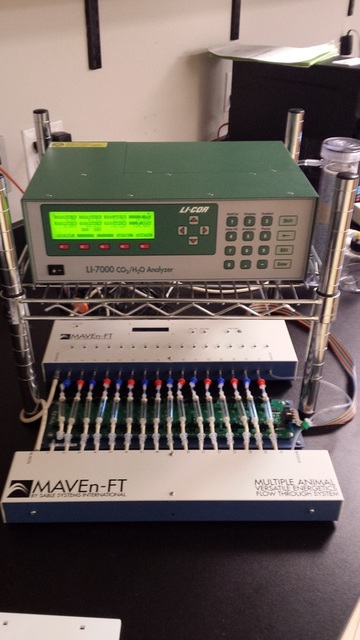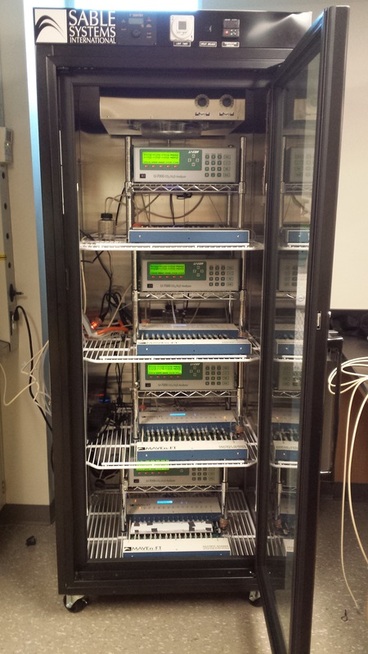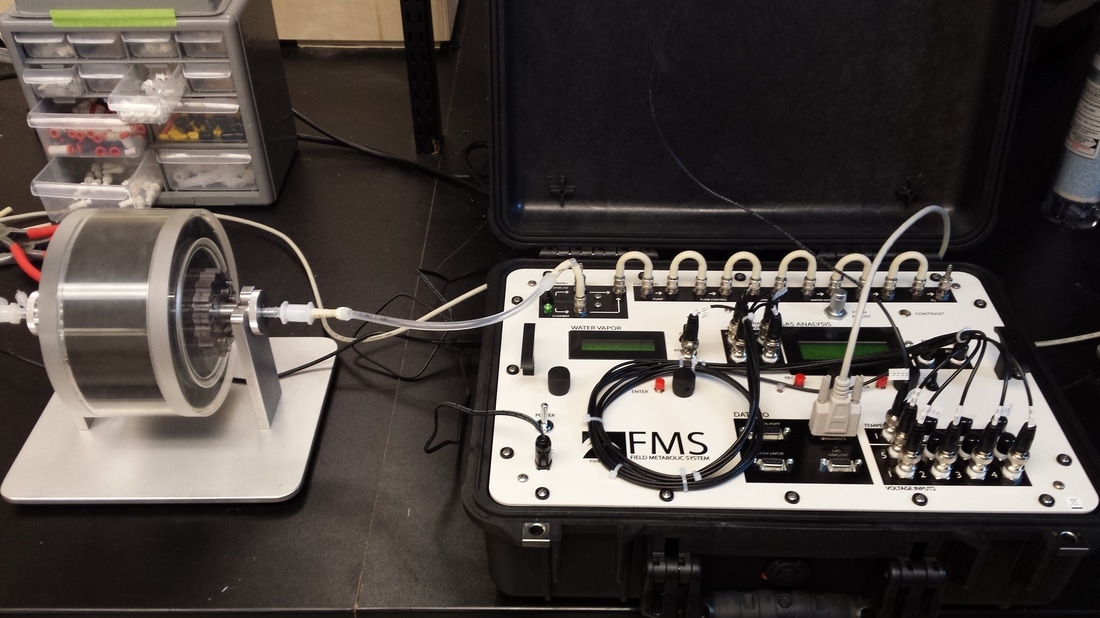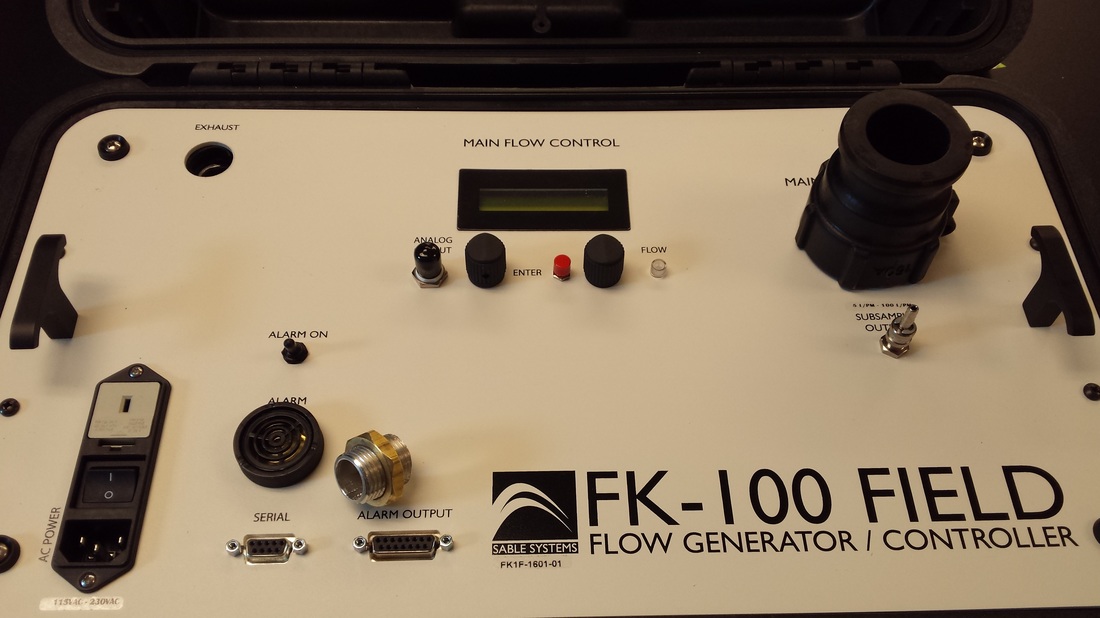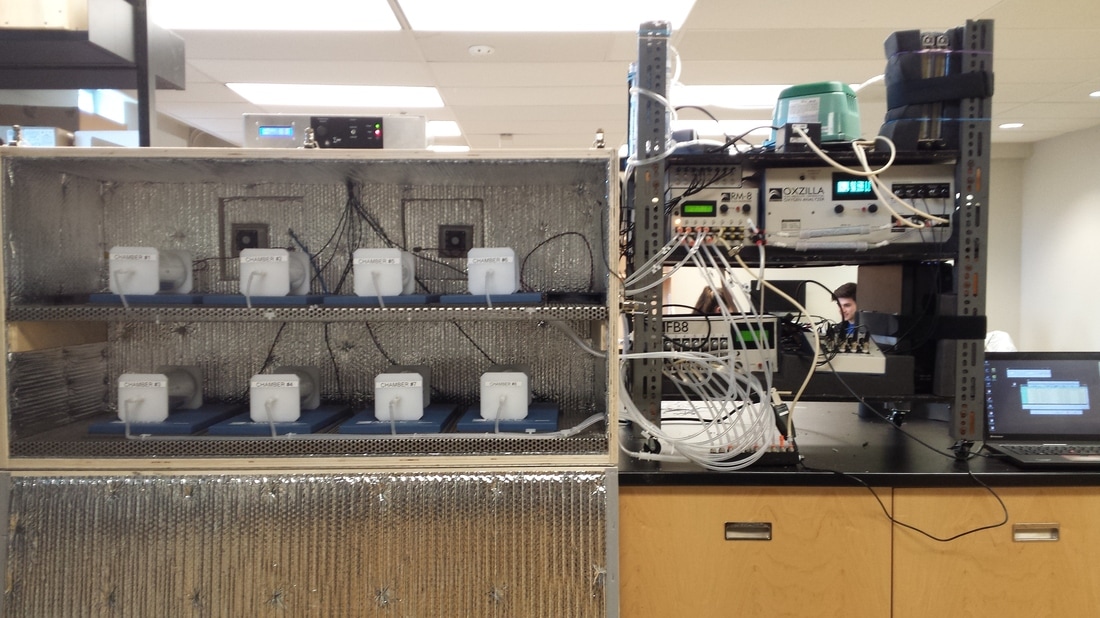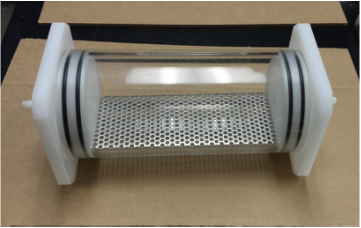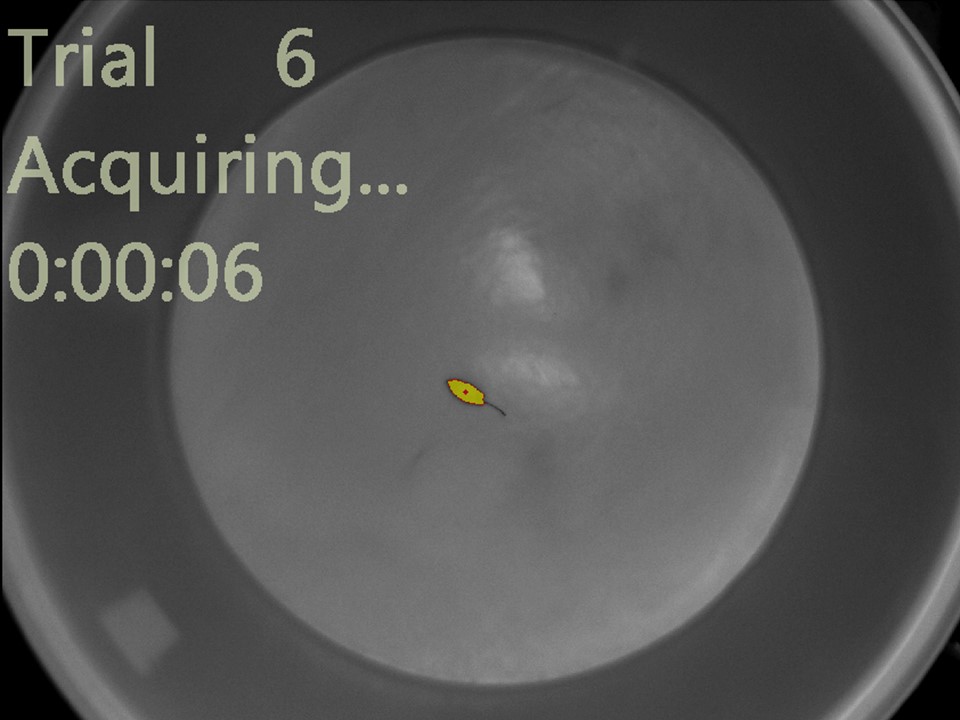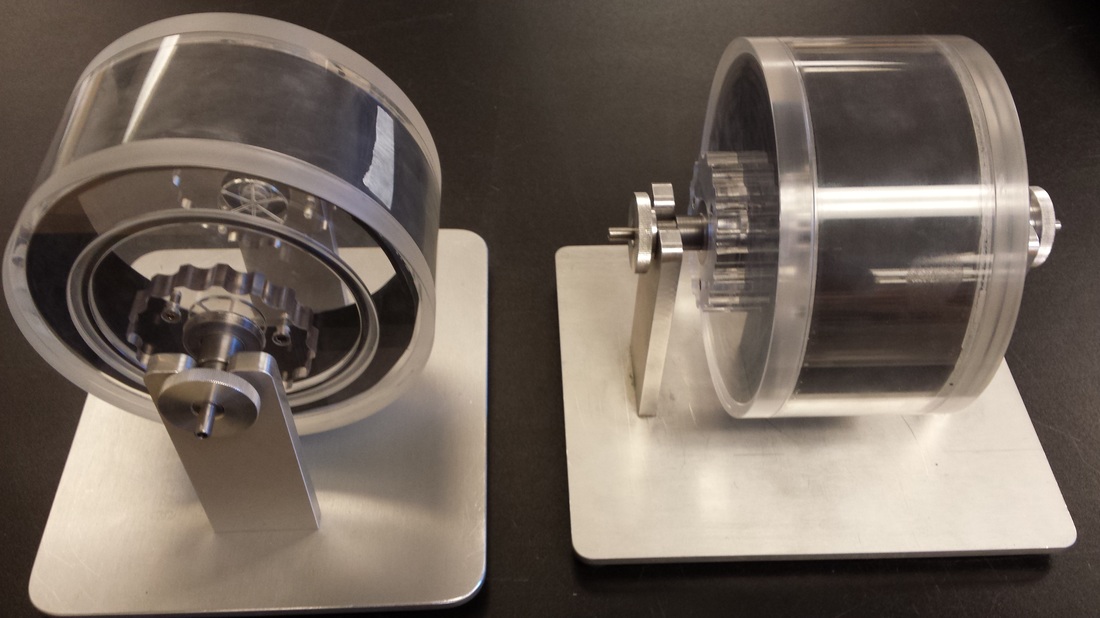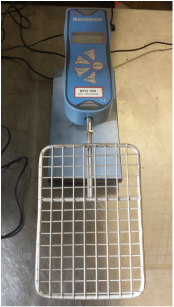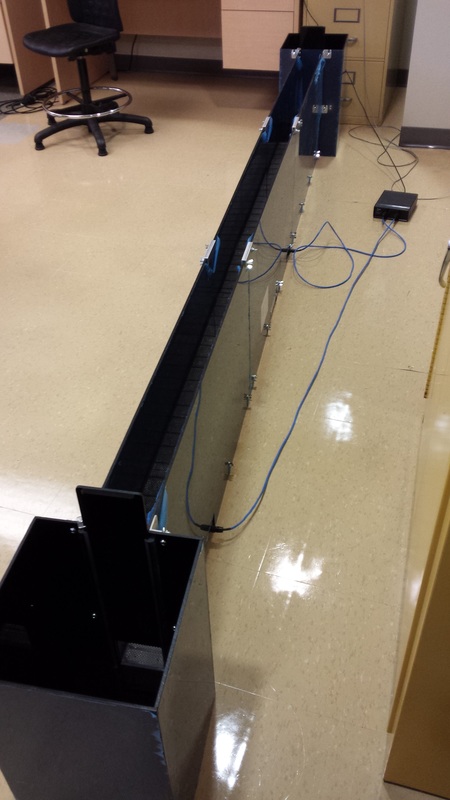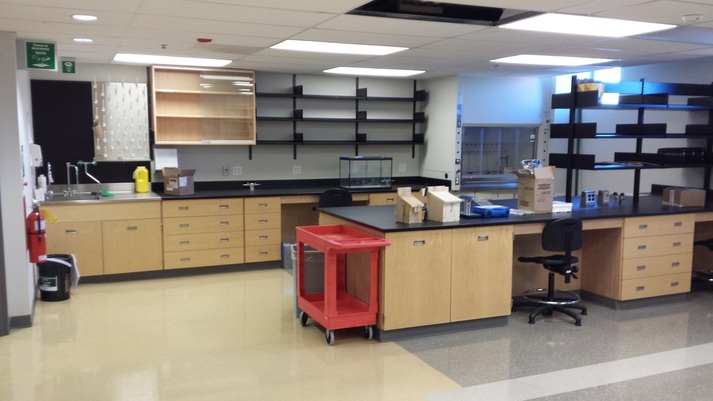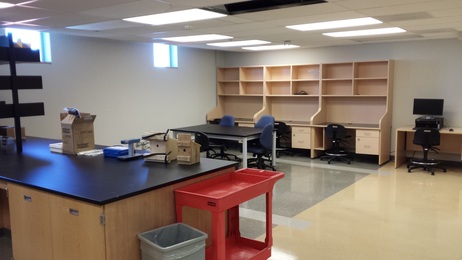Research EquipmentHigh-resolution behavioural and metabolic screening for small rodents
Our lab is equipped with an 8-channel Promethion system. This system recently revolutionised the world of respirometry by taking advantage of new developments – including pull-flow generators, increased gas exchange, equations to account for water vapour dilution and compact sensor configuration – which significantly increase accuracy and eliminate the need of desiccants. These developments offer cycle times up to 10 times faster than before, allowing the simultaneous measurement of metabolic rate in numerous individuals. Using this system, we can take synchronous measurements of metabolic rate, respiratory quotient, food and water intake, voluntary wheel running, and home-cage activity. We will install this system in a facility adjacent to a field site, thus allowing us to tackle a wide range of new questions. For example, we quantify the energetic cost of transport (as the slope of the relationship between metabolic rate as function of running speed) and then estimate its repeatability and how natural selection acts on this ecologically important variable.
High-throughput Flow-Through Metabolic SystemQuantitative genetics studies typically require huge sample sizes (>1000 phenotyped individuals). However, measuring metabolic rate is time consuming. Our lab is equipped with a high-throughput respirometry system allowing the measurement of metabolic rate and activity in 64 individuals at a time. Thus, it becomes possible to conduct large-scale quantitative genetic studies of metabolic rate within a reasonable time frame. Our high-throughput system consists of 4 independent MAVEn units with 16 chambers each. Each unit is hooked up to a CO2 analyser (LiCor 7000) (see one unit below). This allows us to measure CO2 production in animals as a small as Drosophila flies, using flow-through respirometry with concurrent activity monitoring.
Field metabolic systemsWe have 2 Field Metabolic Systems (FMS). Each unit contains a pump and a mass flow meter, a suite of sensors to measure O2, CO2, water vapor, temperature, and barometric pressure. We have two sets of Lithium-Ion batteries allowing us to measure metabolic rate in remote areas away from any source of power.
Classic 8-chambers small animal flow-through respirometry system
Behavioural testingWe have the EthovisionXT software to track animals and quantify activity and exploratory behaviour.
Performance testingOur lab is equipped to measure a variety of performance traits, such as sprint speed, endurance, grip strength, and locomotor agility.
|
Lab Space
Our lab is located in Gendron building (room 452). It is a hybrid lab with a "wet" and "dry" part. The wet part contains a sink, compressed air, fume hood, benches, and back-up power supply. The dry part has offices for graduate students and a table for lab meetings. We have additional space in a lab adjacent to our field site at the Queen's University Biological Station.
